Submitted by WA Contents
Aga Khan Award for Architecture 2022 announces 20 shortlisted projects from 16 countries
Switzerland Architecture News - Jun 03, 2022 - 10:58 4030 views

The Aga Khan Award for Architecture (AKAA) has announced 20 shortlisted projects for its 2022 Award cycle.
Selected from 16 different countries, the shortlisted projects will compete for the US$ 1 million prize, one of the largest prizes in architecture.
The 20 shortlisted projects were selected by an independent Master Jury from a pool of 463 projects nominated for the 15th Award Cycle (2020-2022).
The nine-member Master Jury includes significant names for the 15th Award Cycle, including Nada Al Hassan, Amale Andraos, Francis Kéré, Lina Ghotmeh, Anne Lacaton, Nader Tehrani. The Master Jury will meet for a second time in this summer to examine the on-site reviews and determine the final recipients of the prestigious Award.
Established in 1977 by His Highness the Aga Khan, the Aga Khan Award for Architecture "identifies and encourages building concepts that successfully address the needs and aspirations of communities in which Muslims have a significant presence." For 45 year, the Awards have recognized 121 projects and documented nearly 10,000 building projects.
"The AKAA’s selection process emphasises architecture that not only provides for people’s physical, social and economic needs, but that also stimulates and responds to their cultural aspirations," stated a press release.
"The shortlisted projects have undergone rigorous reviews, at the site of each project, by independent experts, including architects, conservation specialists, planners and structural engineers," added the Aga Khan Award for Architecture.
See the 20 shortlisted projects with their short project descriptions competing for the 2022 Award Cycle:
Bahrain

Rehabilitation of Manama Post Office, Manama, Bahrain, by Studio Anne Holtrop. Rehabilitation of the Manama Post Office by Studio Anne Holtrop. Image © Aga Khan Trust for Culture / Maxime Delvaux
Rehabilitation of Manama Post Office, Manama, Bahrain, by Studio Anne Holtrop
"Built in 1937, the Post Office was rehabilitated to its original form and role as a functioning post office, and added a new wing to the existing building."
Bangladesh

Community Spaces in Rohingya Refugee Response, Teknaf, Bangladesh, by Rizvi Hassan, Khwaja Fatmi, Saad Ben Mostafa. Aerial view of the Safe Space for Women and Girls in Camp 25. The activity areas and rooms are organised around an open courtyard, connecting them into one larger space. Image © Aga Khan Trust for Culture / Asif Salman
Community Spaces in Rohingya Refugee Response, Teknaf, Bangladesh, by Rizvi Hassan, Khwaja Fatmi, Saad Ben Mostafa
"Sustainably built structures in the world’s largest refugee camps, which occurred collaboratively in the field without drawings or models."
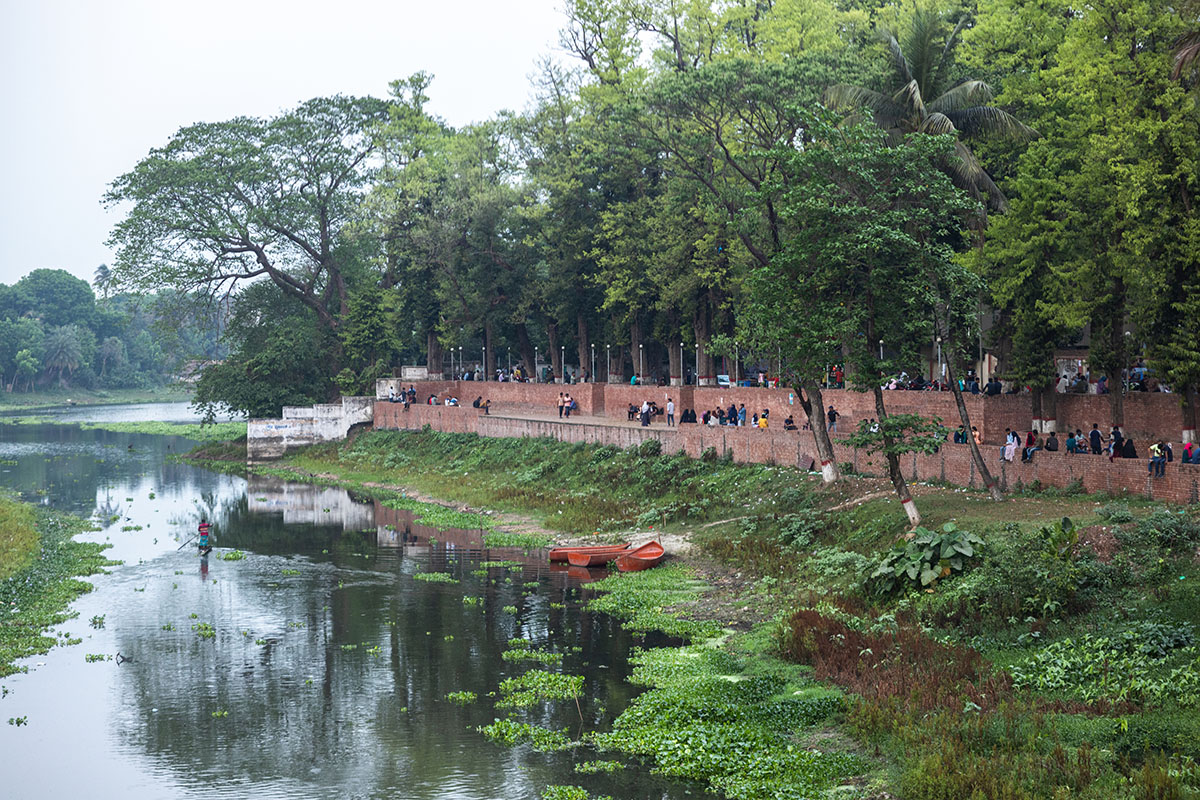
Urban River Spaces, Jhenaidah, Bangladesh, by Co.Creation.Architects / Khondaker Hasibul Kabir, Suhailey Farzana. The area was difficult to access in spite of its central location. The municipality accepted to break paths in several walls in order to make the ghat and the river easily reachable. Image © Aga Khan Trust for Culture / Asif Salman
Urban River Spaces, Jhenaidah, Bangladesh, by Co.Creation.Architects / Khondaker Hasibul Kabir, Suhailey Farzana
"A community-driven project providing public spaces in a riverine city with 250,000 residents, offering walkways, gardens and cultural facilities, as well as environmental efforts to increase biodiversity along the river."
Cape Verde
Outros Bairros Rehabilitation Programme, Mindelo, Cape Verde, by OUTROS BAIRROS / Nuno Flores. The initiative intends to introduce urban informality into the national housing and territory policy as a form of urbanisation. Image © Nuno Flores
Outros Bairros Rehabilitation Programme, Mindelo, Cape Verde, by OUTROS BAIRROS / Nuno Flores
"An urban rehabilitation and redesign of a public space allowed residents to execute works in their own neighbourhoods and enhance their sense of belonging."
India

Lilavati Lalbhai Library at CEPT University, in Ahmedabad, India, by RMA architects / Rahul Mehrotra. View of the louvred façade. Image © Aga Khan Trust for Culture / Dinesh Mehta
Lilavati Lalbhai Library at CEPT University, in Ahmedabad, India, by RMA architects / Rahul Mehrotra
"The library, a living case study of passive climate mitigation strategies, integrates seamlessly into the existing campus while forging its own distinct identity."
Indonesia
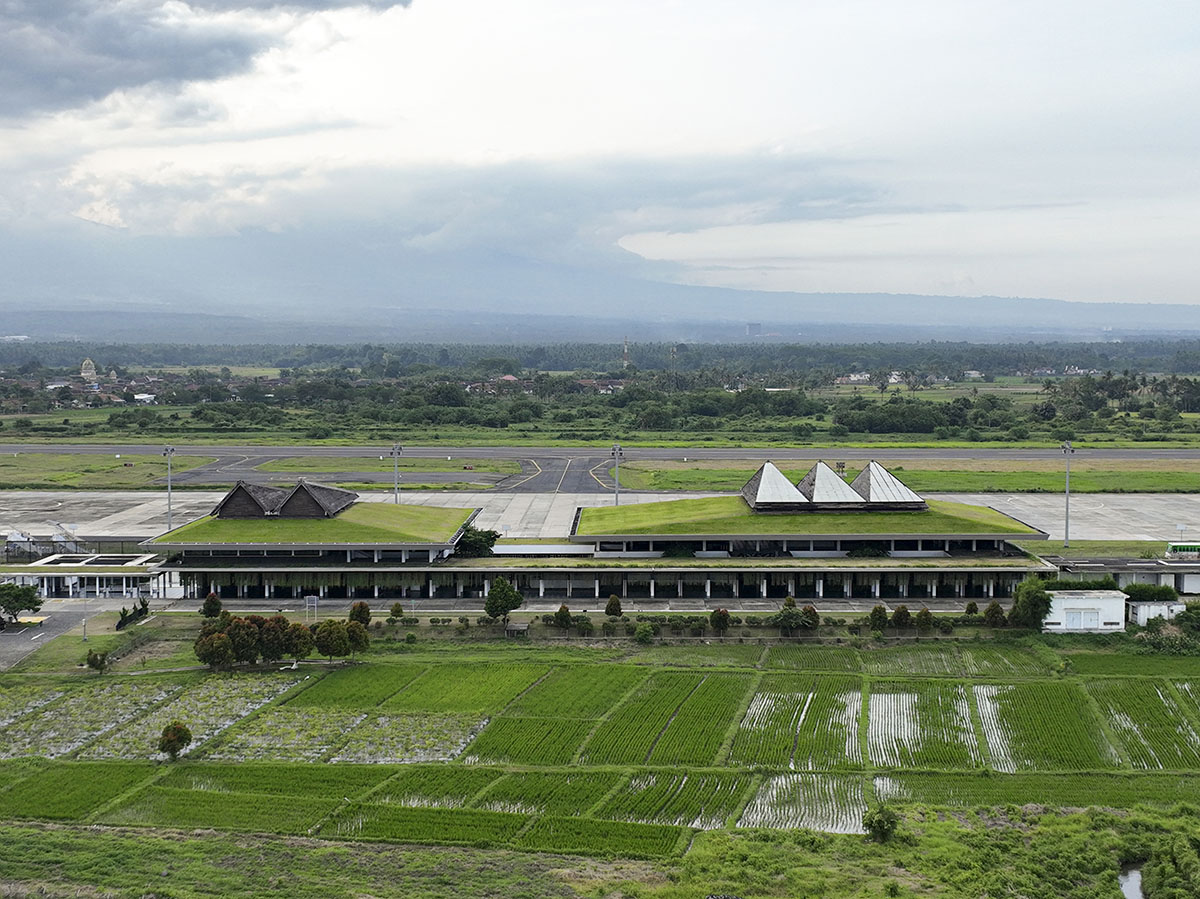
Blimbingsari Airport, Banyuwangi, Indonesia, by andramatin. The building offers a contemporary interpretation of vernacular design principles. Image © Aga Khan Trust for Culture / Mario Wibowo
Blimbingsari Airport, Banyuwangi, Indonesia, by andramatin
"Serving more than 1,100 domestic passengers per day, the airport’s roofs indicate a clear division between departure and arrival halls."
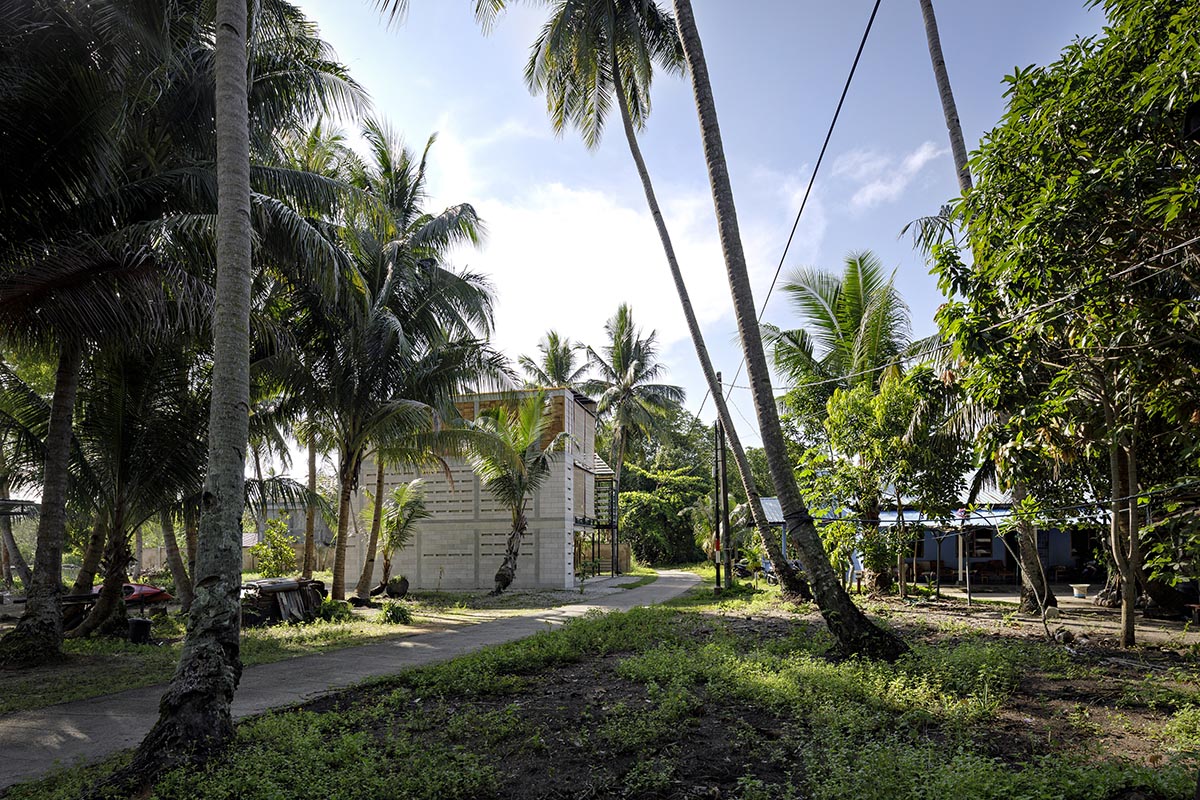
Expandable House, Batam, Indonesia, by ETH Zurich / Stephen Cairns with Miya Irawati, Azwan Aziz, Dioguna Putra and Sumiadi Rahman. West elevation of fully expanded house showing the perforated aerated cement block on the lower floors. Image © Aga Khan Trust for Culture / Mario Wibowo
Expandable House, Batam, Indonesia, by ETH Zurich / Stephen Cairns with Miya Irawati, Azwan Aziz, Dioguna Putra and Sumiadi Rahman
"This new sustainable dwelling prototype is designed to be flexibly configured around its residents’ (often) precarious resources over time."
Iran
Aban House, Isfahan, Iran, by USE Studio / Mohammad Arab, Mina Moeineddini. This three-storey family house was designed to blend into the historic neighbourhood. Image © Aga Khan Trust for Culture / Deed Studio
Aban House, Isfahan, Iran, by USE Studio / Mohammad Arab, Mina Moeineddini
"On a narrow rectangular site in Isfahan’s historic centre, the three-storey house is arranged around three open courtyards."
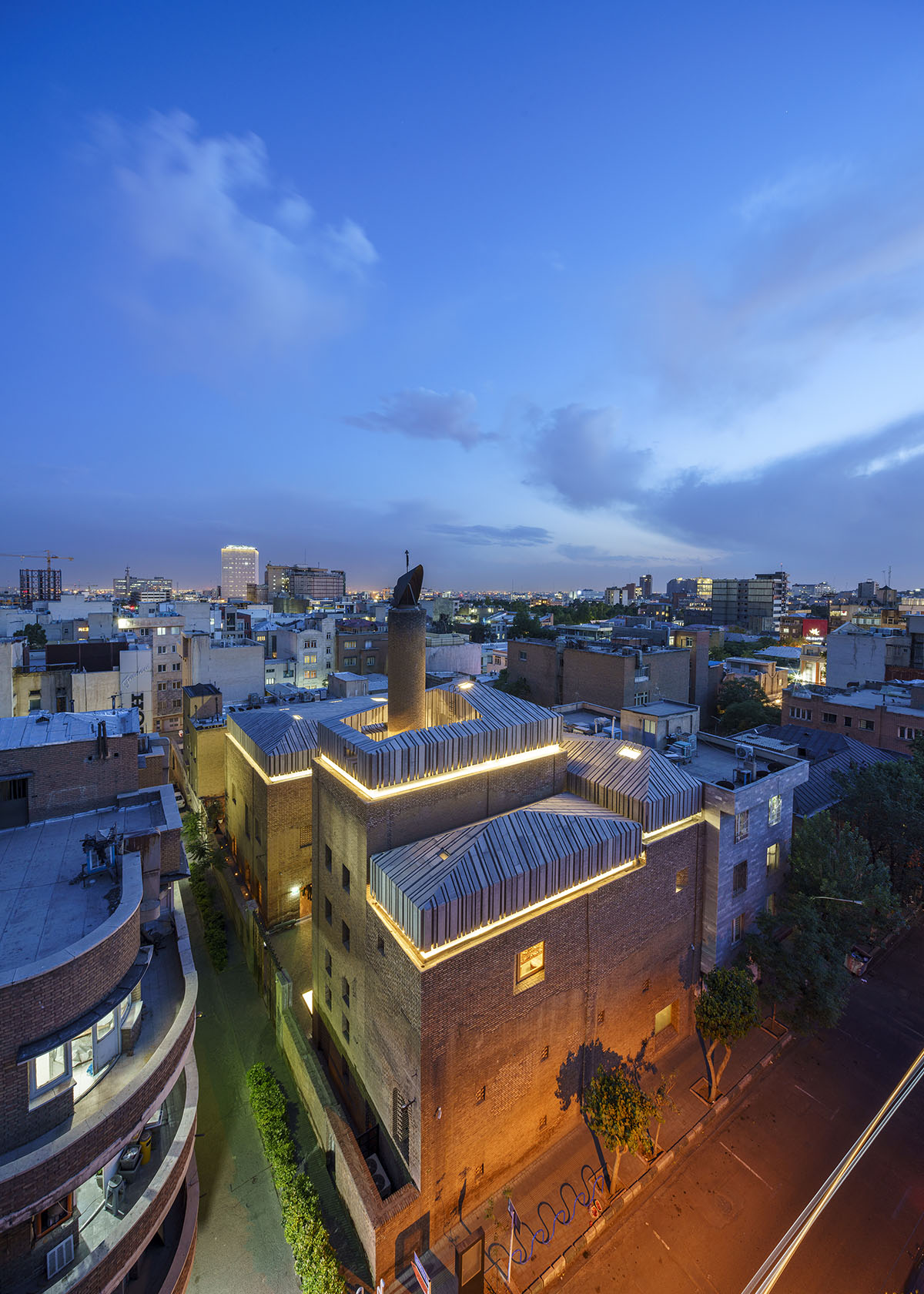
Argo Contemporary Art Museum & Cultural Centre, Tehran, Iran, by ASA North / Ahmadreza Schricker. Aerial view of the museum by night. Image © Aga Khan Trust for Culture / Deed Studio
Argo Contemporary Art Museum & Cultural Centre, Tehran, Iran, by ASA North / Ahmadreza Schricker
"Distinct materials differentiate new additions from the brick-built historic fabric in this contemporary art museum housed in an abandoned 100-year-old brewery."

Jadgal Elementary School, Seyyed Bar, Iran, by DAAZ Office / Arash Aliabadi. The school was built using Insulating Concrete Formwork in order to create an earthquake-resilient structure. Image © Aga Khan Trust for Culture / Deed Studio
Jadgal Elementary School, Seyyed Bar, Iran, by DAAZ Office / Arash Aliabadi
"An elementary school, managed by villagers and teachers and funded by tourism and needlework from local women, is a sustainable development centre for surrounding areas."
Lebanon

Renovation of Niemeyer Guest House, Tripoli, Lebanon, by East Architecture Studio. Central courtyard with the glazed partitions. Image © Aga Khan Trust for Culture / Cemal Emden
Renovation of Niemeyer Guest House, Tripoli, Lebanon, by East Architecture Studio
"Designed by Oscar Niemeyer but abandoned when civil war erupted in 1975, the guest house has been transformed into a design platform and production facility for the local wood industry."
Kuwait
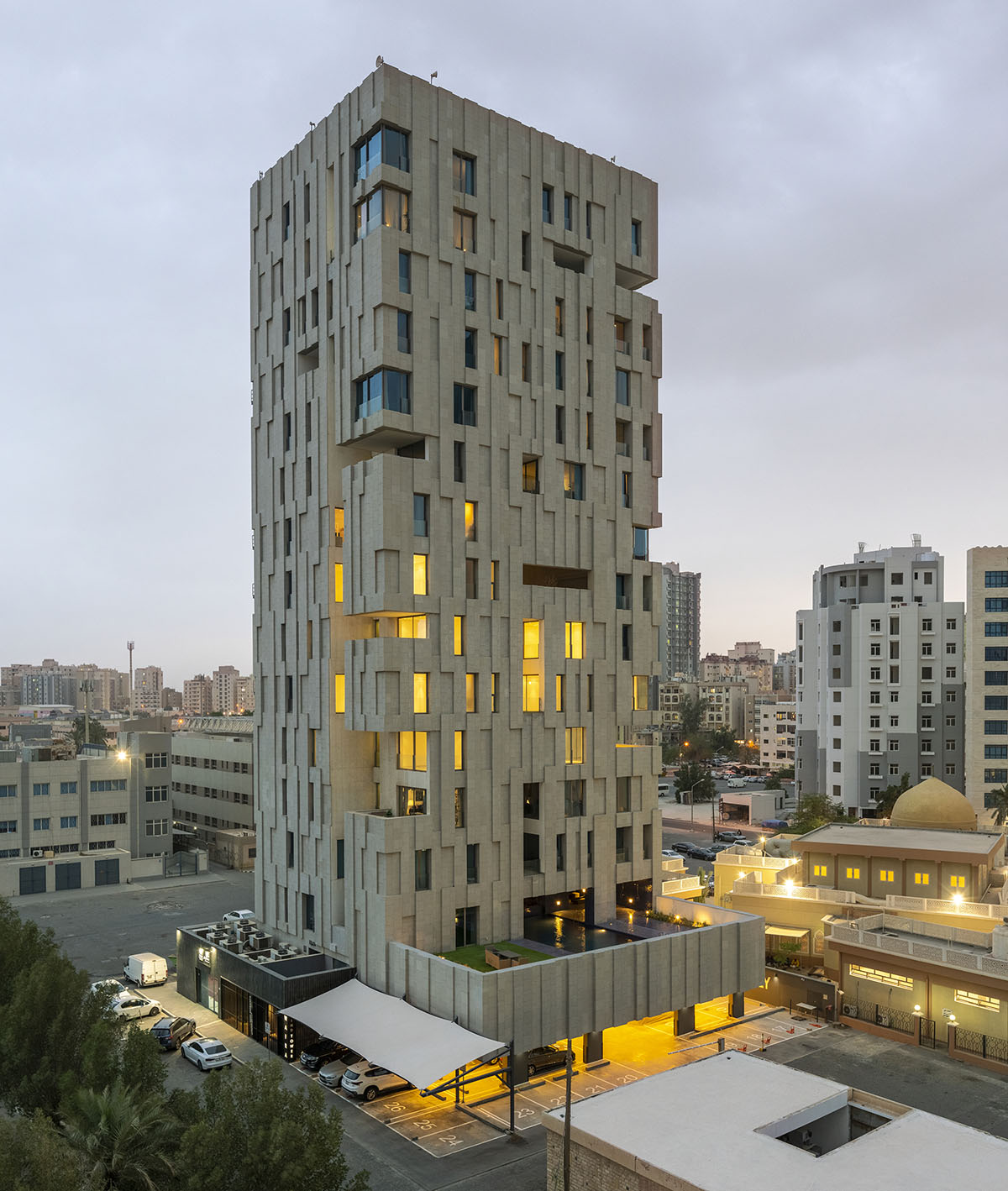
Wafra Wind Tower, Kuwait City, Kuwait, by AGi Architects. View of the north 13-storey façade in the Salmiya area of Kuwait City. Image © Aga Khan Trust for Culture / Cemal Emden
Wafra Wind Tower, Kuwait City, Kuwait, by AGi Architects
"The 13-storey building conceived as a wind tower features a central, vertical courtyard that provides natural ventilation to each apartment unit."
Morocco
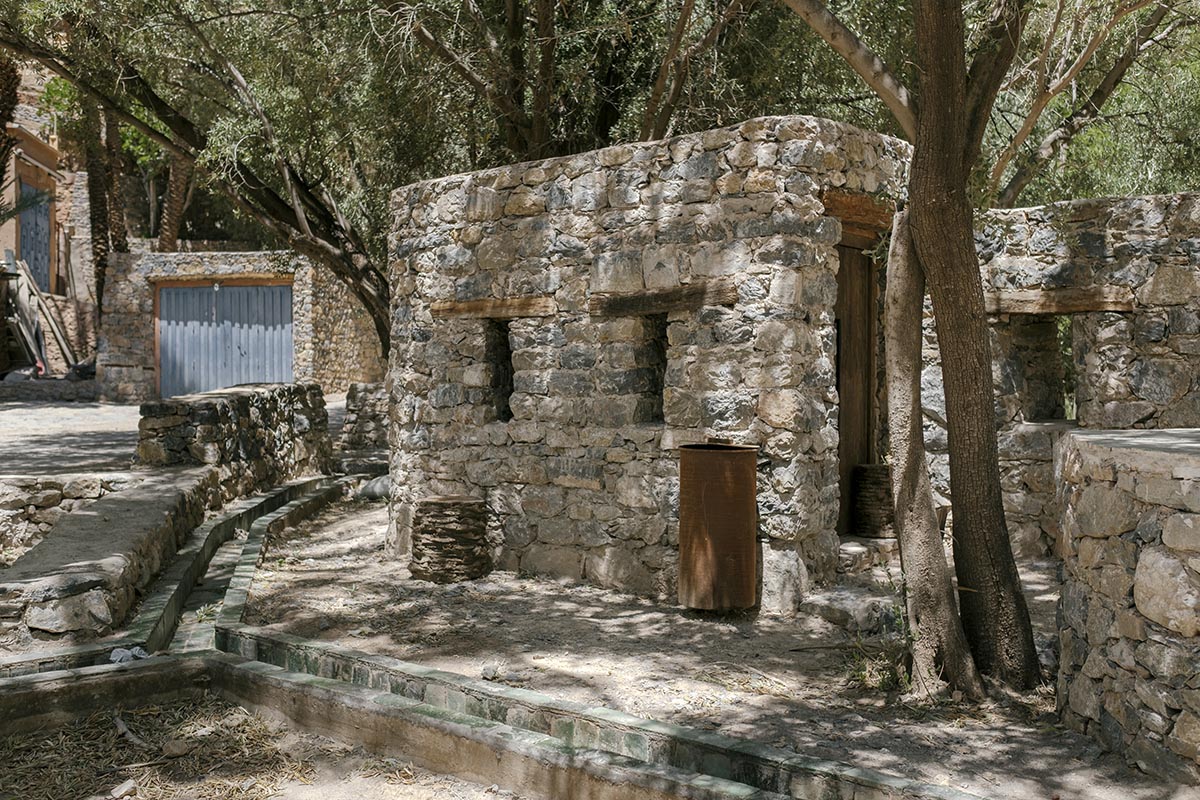
Issy Valley Improvement, Ait Mansour, Morocco, by Salima Naji. The project is resolutely focused on preserving the landscape, ecosystem, culture and architecture of the valley. Heritage is not perceived as a solidified mythical past but rather as a context-specific resource to answer contemporary challenges. Image © Aga Khan Trust for Culture / Amine Houari
Issy Valley Improvement, Ait Mansour, Morocco, by Salima Naji
"While improving the palm orchards and water reservoirs, trails and facilities for tourists were also upgraded in the first phase of a larger project for the valley."
Niger
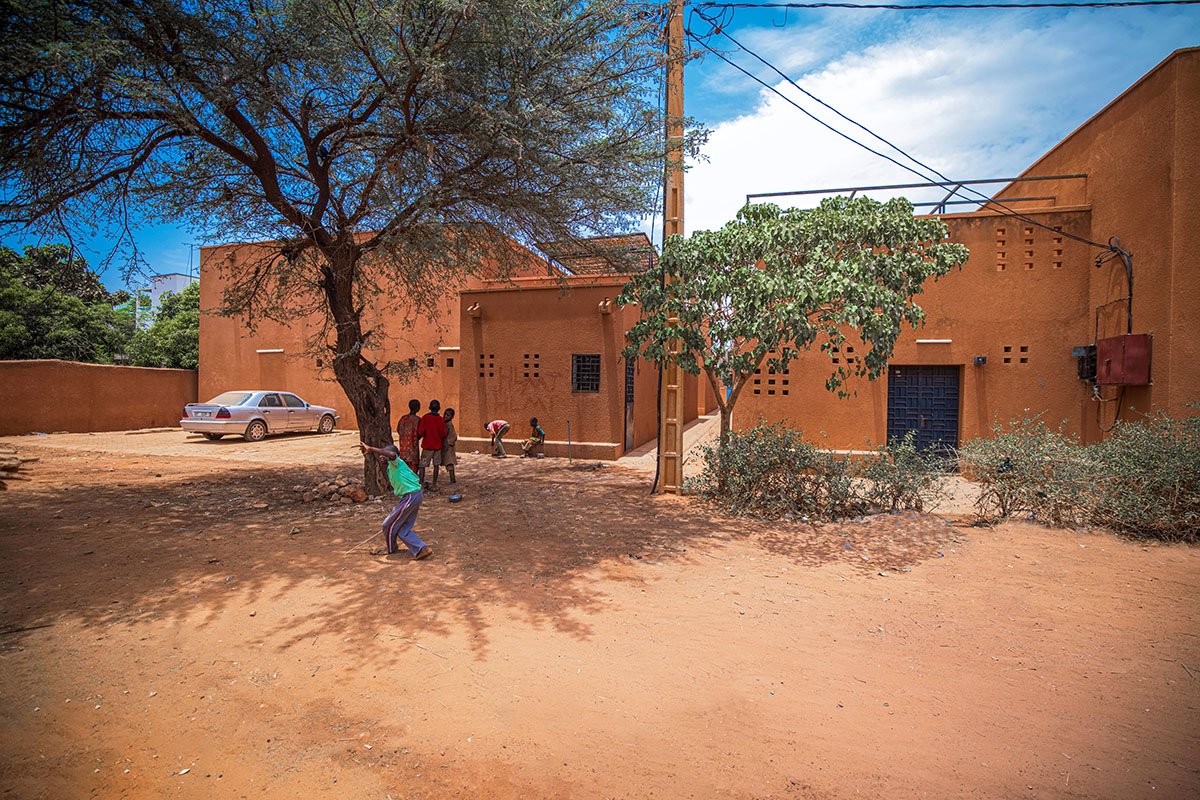
Niamey 2000, Niamey, Niger, by united4design / Yasaman Esmaili, Elizabeth Golden, Mariam Kamara, Philip Straeter. Each family unit contains two floors with outdoor spaces on the ground and upper floors. Image © Aga Khan Trust for Culture / Aboubacar Magagi
Niamey 2000, Niamey, Niger, by united4design / Yasaman Esmaili, Elizabeth Golden, Mariam Kamara, Philip Straeter
"As a response to a housing shortage amid rapid urban expansion, this prototype housing of six family units seeks to increase density while remaining culturally appropriate."
Palestine

Tulkarm Courthouse, Tulkarm, Palestine, by AAU Anastas. Main entrance to the courthouse with broad stone stairs that give onto an open urban plaza. Image © Aga Khan Trust for Culture / Cemal Emden
Tulkarm Courthouse, Tulkarm, Palestine, by AAU Anastas
"Featuring two buildings, one for administration and the other containing 10 courtrooms, the Courthouse is anchored to its urban context by a public space."
Senegal
CEM Kamanar Secondary School, Thionck Essyl, Senegal, by Dawoffice. The clay vault modules were produced using local techniques. Image © Aga Khan Trust for Culture / Amir Anoushfar
CEM Kamanar Secondary School, Thionck Essyl, Senegal, by Dawoffice
"For this secondary school, volunteers, using local techniques, produced vault modules from clay which (with lattices) act as evaporating coolers."
Sri Lanka
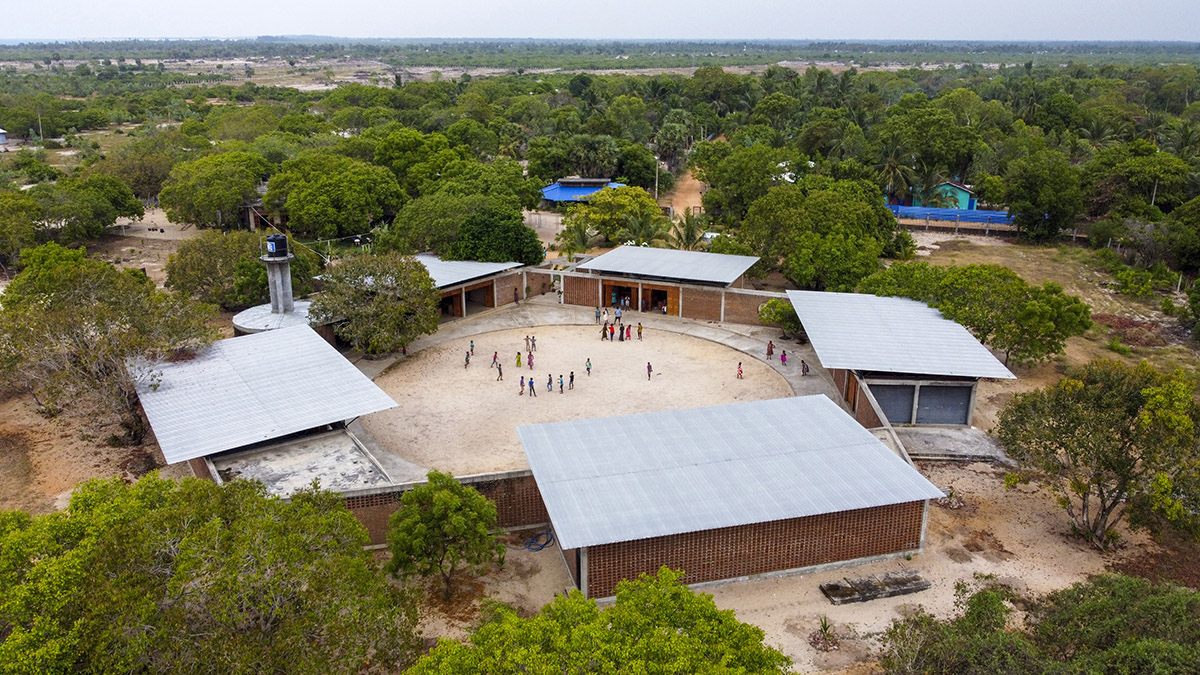
Lanka Learning Centre, Parangiyamadu, Sri Lanka, by feat.collective / Noemi Thiele, Felix Lupatsch, Valentin Ott and Felix Yaparsidi. Aerial view of the Lanka Learning Centre showing its pentangular plan and integration into the landscape. The architects kept all the existing trees, which now provide shade to the complex. Image © Aga Khan Trust for Culture / Nipun Prabhakar
Lanka Learning Centre, Parangiyamadu, Sri Lanka, by feat.collective / Noemi Thiele, Felix Lupatsch, Valentin Ott and Felix Yaparsidi
"A multifunctional cultural centre and adult school where locals learn craftsmanship creates a multi-ethnic meeting point."
Tunisia
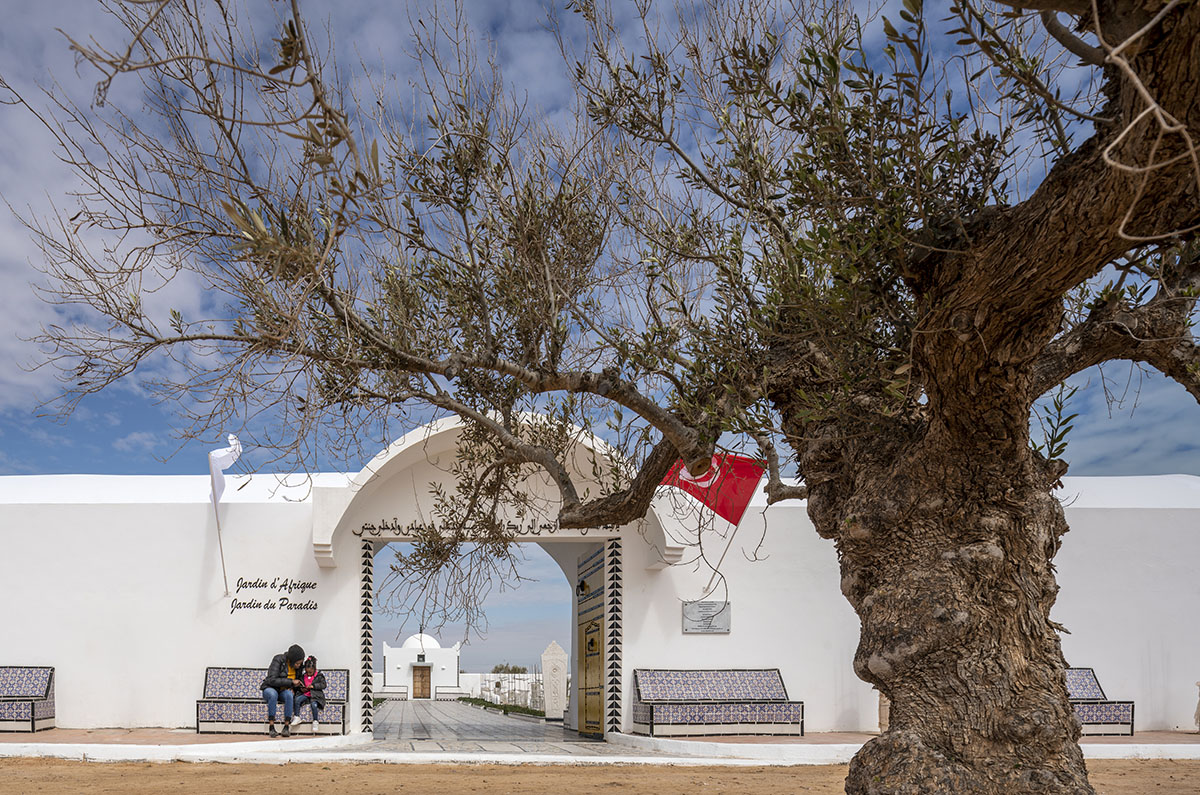
Le Jardin d'Afrique, Zarzis, Tunisia, by Rachid Koraïchi. Entrance to the memorial for migrants who drowned whilst crossing the Mediterranean. Image © Aga Khan Trust for Culture / Cemal Emden
Le Jardin d'Afrique, Zarzis, Tunisia, by Rachid Koraïchi
"An ecumenical cemetery provides a sanctuary and dignified place of final repose for the hundreds of unburied bodies that had been washing ashore."
Turkey

Rehabilitation of Tarsus Old Ginnery, Tarsus, Turkey, by Sayka Construction Architecture Engineering Consultancy. The complex is composed of four buildings. Image © Aga Khan Trust for Culture / Cemal Emden
Rehabilitation of Tarsus Old Ginnery, Tarsus, Turkey, by Sayka Construction Architecture Engineering Consultancy
"Adaptive reuse of an abandoned 19th century ginnery allows the operation of a contemporary centre for archaeological research and public engagement."
United Arab Emirates

Flying Saucer Rehabilitation, Sharjah, United Arab Emirates, by SpaceContinuum Design Studio / Mona El Mousfy. The Sharjah Art Foundation acquired and commissioned the complete rehabilitation of the iconic Flying Saucer restaurant, originally built in the 1970s. Image © Aga Khan Trust for Culture / Danko Stjepanovic
Flying Saucer Rehabilitation, Sharjah, United Arab Emirates, by SpaceContinuum Design Studio / Mona El Mousfy
"The Flying Saucer, a 1978 Brutalist-style building that was fully restored as a community art space, contributes to Sharjah’s collective cultural memory."
Top image: Community Spaces in Rohingya Refugee Response, Teknaf, Bangladesh, by Rizvi Hassan, Khwaja Fatmi, Saad Ben Mostafa. Image © Aga Khan Trust for Culture / Asif Salman.
